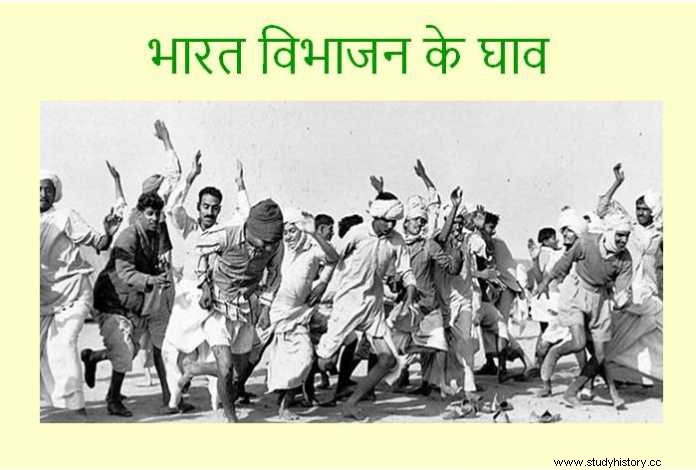
Captain Atkins and his Gurkha soldiers spent several weeks behind the security of the refugees. Caravans of Hindus would go to India and take caravans of Muslims to Pakistan. , Refugees would appear happy at the time of their departure, then as they progressed, they would become exhausted with hunger, thirst and fatigue. They could not bear the scorching heat. They start feeling scared that this long distance journey will ever end or not?
The weight of even the smallest thing started to become heavy for them. One by one they started throwing things. When they finally reach their destination, they have nothing left. Absolutely nothing. The most unfortunate would have been those who could not complete their long journey. The old, the sick and the children would get tired quickly. The parents whose powers did not support them enough to carry the children and keep moving forward, would have abandoned them on the way and left with the caravan themselves.
Such children would die of hunger and thirst. On the way, suddenly the old man would leave the caravan. They would look for some shade near the road, in whose peace they could wait for the end of their troubled life. The soldiers accompanying these caravans also had to get pregnant women delivered in their station wagons. Immediately after delivery, the woman would walk in the direction of India or Pakistan with her newborn child.
It is difficult to describe the filth of dead bodies that the caravan would have left behind. Many caravans passed through the 45-mile long road between Lahore and Amritsar. That whole road turned into an open grave. There was a terrible smell on this road. The vultures had become so heavy that they could not even fly after eating the carcasses. The wild dogs were so addicted to the taste that they would eat only the liver of the corpse, leaving the rest of the organs.
Mrs. Kailash Verma, a member of one such family who came to Bikaner from East Punjab at the time of partition of India, told me that the desire of people to bring their lactating babies with them did not end till the end but when they were brought back due to hunger, disease, disability etc. If it would have been impossible to walk with children, they would have dropped their boy from the lap and left him alive on the side of the road so that if God had written life in his destiny, he would be saved alive, but by keeping the girl removed from the lap on the earth. They used to suffocate her throat with their feet so that she would not have to do prostitution when she grew up.
Larry Collins and Dominic Lapierre have alleged that the attacks of the Sikhs used to be the most dreadful. Their hordes would suddenly appear from the sugarcane and wheat fields, with a fierce cry, on the part of the caravan where the security arrangements would have been weakest. Those of the caravan who would have staggered and stayed behind, they would also make terrible attacks on them.
Many a times caravans of Hindus and Muslims started crossing on the same road from face to face. How will their behavior then, no one can predict in advance. Burning in the fire of hatred, they would lash out at each other and it would be difficult to get rid of them. Even dead bodies would fall in these mutual fights. Many times the Muslims crossing each other would tell the Hindus and the Hindus would also tell the Muslims what places they had left behind so that you could go and take possession.
According to various estimates 5 lakh people died in these riots. There was loss of public and money to 1,20,00,000 people. During this time there were riots, fires, kidnapping and looting of women from place to place all over the country. Justice G. D. Khosla in his book 'Stern Racking' It has painted a clear picture of the revolts taking place in Punjab, North-West Frontier Province, Sindh and Bengal etc. The Congress leaders who had reached the interim government could not perform their duty. He was completely unfit for this position.
Judge G. According to the estimates of D. Khosla, who is considered to be the main scholar of those massacres and disasters, from 16 August 1946 to the end of AD 1947, one million people were killed. Two of England's leading historians, Pendle Moon and H. V. Hudson, estimated the deaths at 2 lakh and 2.5 lakh, respectively. The convoys of refugees kept on coming till the movement of 1.5 million refugees was completed.
The outskirts of Bengal remained relatively quiet, with one million people coming and going from this side to the other as refugees. Due to this devastation, all the prominent leaders of India and the last Viceroy had to face harsh criticism all over the world. The Punjab Boundary Force of only 55 thousand soldiers was so brief to keep those riots under control that all historians were amazed at the short-sightedness of the builder of that army, Lord Mountbatten and his advisors.
……the riots of Punjab, however severe they may have been, in total they affected only one tenth of the total population of India and they did not spread often to the provinces other than Punjab.
